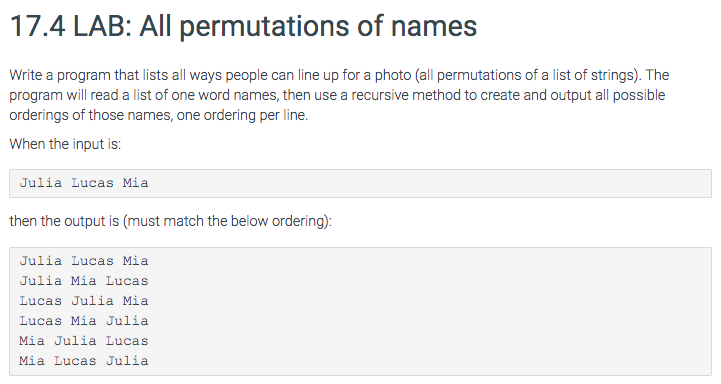
If you want to create random numbers with a custom seed without affecting Math.random, add var myrng = new edrandom(‘hello.’) to code_JS and then retrieve random numbers using myrng(). The seed generated is saved to seedString. (Wiki) For example, if bogosort is used to. The algorithm successively generates permutations of its input until it finds one that is sorted. It is based on generate and test paradigm. You can think of temparr and arr as two 'sticky-notes' attached to the same underlying list object, which will change accordingly. BogoSort also known as permutation sort, stupid sort, slow sort, shotgun sort or monkey sort is a particularly ineffective algorithm one person can ever imagine. Parameters: xarraylike, at least one-dimensional. If x is an array, make a copy and shuffle the elements randomly. When you set temparr arr, temparr is simply a reference to the same underlying (mutable) list as arr.Hence you are modifying it. Unlike shuffle, each slice along the given axis is shuffled independently of the others. If x is an integer, randomly permute np.arange (x). If x is a multi-dimensional array, it is only shuffled along its first index. Your general idea was fine, np.zeros is often used to preallocate an array and fill it afterwards. Randomly permute a sequence, or return a permuted range. seedString = edrandom() will seed based on current time, dom state, and other accumulated local entropy. Yes, you can use np.zeros (rgbImg.shape), but there is an even more convenient way: np.zeroslike (rgbImg).

If you use the seed “hello.” then the first two numbers generated by random() will be 0.9282578795792454 and then 0.3752569768646784. A random permutation is a random ordering of a set of objects, that is, a permutation-valued random variable. You can then seed the random numbers by adding edrandom(“hello.”) to code_JS. Shuffling 1: Changing the printed order of elements in a dictionary Here we are going to retain the association between months and days but simply print them. P perms (v) returns a matrix containing all permutations of the elements of vector v in reverse lexicographic order. That doesn't work for me because the matrices are adjacency matrices (representing graphs), and I need to do the permutations which will give me a. Nah, thats because of the random.random() line you have there which consumes one random number and changes the state of the Random object.
Randomly permute python code#
def permutation (flag, k 1 ): N len (flag) for i in xrange (0, N): if flag i 0: continue flag i k if k N: print flag permutation (flag, k+1) flag i 0 permutation ( 0, 0, 0) Pathros well, the code above is for Python 2.

numpy.shuffle and numpy.permutation seem to permute only the rows of the matrix (not the columns at the same time). Answer is highly inspired by Get all permutations of a numpy array. So far I have found the Knuth Shuffle to do this in JS language: function shuffle(array) (this,Math,256,6,52,“object”=typeof module&module,“function”=typeof define&define,“random”) But, I would like to know if there is something more efficient that does this. With itertools.I am trying to replace the “random.shuffle” function so that I can upload my experiment to Pavlovia as I cannot import anything when I want to use it in Pavlovia. Data Structures & Algorithms in Python - Self Paced. # permutation_list will contain the list of string variations from this point onĬollecting different permutation of string without duplicates in a list Permute two arrays such that sum of every pair is greater or equal to K. A sequence can be shuffled using it (like a list or a tuple) in Python shuffling means.


Permutate_string(rem, prefix + string)Ĭollecting different permutation of string with duplicates in a listĭef build_permutation_list(string, prefix='', permutation_list=):īuild_permutation_list(rem, prefix + string, permutation_list)īuild_permutation_list('abb', permutation_list=permutation_list) The random package of Python has a built-in function shuffle(). Without importing any Python 3 libraries Printing different permutation of string with duplicatesĭef permutate_string(string, prefix = ''): This post shows how we can permutate a string in Python 3. 1 Answer Sorted by: 1 The second argument to random.sample () should be < the length of the first argument, otherwise an exception will be generated. Given that n is the number of characters, there are n! different ways to permutate a given string. To permutate a string is to change the order or arrangement of the characters that the string is made up of.


 0 kommentar(er)
0 kommentar(er)
